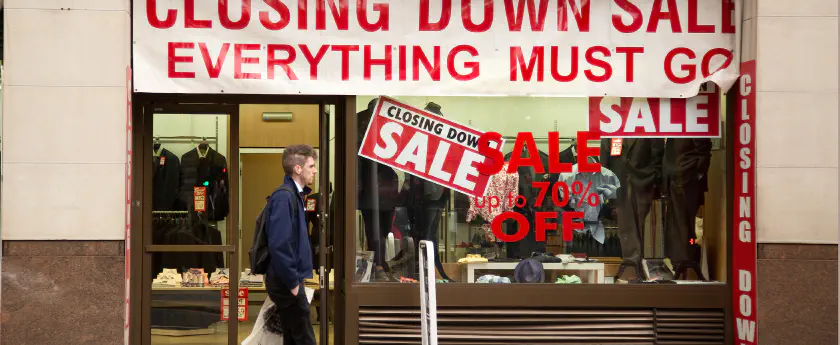Survey Solutions to Customer Loss
Businesses lose customers across many industries. While this is a natural market event, more and more companies struggle to find ways to stop their businesses from failing due to high customer loss rates. CNN reported that American Airlines lost many of its most lucrative business passengers due to significant flight delays and cancellations due to pilot disputes over contract negotiations.
Leap Wireless International, Inc. experienced a 15% loss at the close of trading. The company blamed ineffective customer retention programs that came at a higher than anticipated cost.
NetFlix lost an estimated 850,000 to one million customers when it raised prices by 60% for DVD rentals and streaming content. As it turned out, better public relations and clearer, more timely explanations could have negated both customer loss and a bruised brand.
Retail companies online depend on website pages loading quickly, which has a direct impact on sales and revenues. According to the Aberdeen Group, as reported by Herb Weisbaum of NBC News, a one-second delay in page load time is equivalent to 11% fewer page views, a 16% decrease in customer satisfaction, and a 7% loss in conversions – all bad for business.
Sears dominated the retail market for years, as did JC Penney. Both have lost market share from low lost competitors like Wal-Mart and specialty stores like Abercrombie & Fitch.
And, The United States Postal Service continues to lose customers due to fax machines, emails, smart technologies, online data transfers, and other package delivery services.
“Buggy & whip companies could have been the first car makers and newspapers could have been the first firms to put large amounts of news online. Neither happened. One new set of businesses were born,” write Charles Stockdale and Douglas A. McIntyre, in Ten Companies Running Out of American Customers. “Older ones lost customers and some lost enough so that they were no longer viable.”
Businesses experience a loss in revenue or sense that customers are not as loyal as before; marketing and sales spends more time acquiring new customers than selling to those already on board.
There may well be no problem of more concern to businesses than that of churn, of losing customers. Yet, according to Customer Champions, Ltd, fewer than one in five companies conduct any type of review to find out why. While this may be due to the time and money involved in such an endeavor, companies actually have as much to learn from losing as they do from winning.
Customers leave companies for many reasons. Companies lose customer business due to lack of innovation and, whether due to complacency or for want of resources, the net result remains the same: fewer customers.
Businesses lose customers daily due to poor customer service, which includes more than phone or real time email conversations. Customer service extends to creating an environment or atmosphere in which to conduct business with amenities like adequate parking, efficient paths of travel, places to rest, and trained associates. How user-friendly is your business?
Businesses lose customers because products or services are priced incorrectly. This makes it easier for other businesses to entice customers away with competitive pricing for the same or similar products and services.
“It’s important for new businesses to complete a competitive analysis, but competitive intelligence can also be useful for marketing, pricing, managing, and other strategic planning for retailers, “ writes Sherri Waters, on retail.about.com. “Before you can know your competitive edge, you must know your competitor.”
And, the real reason(s) behind customer loss must be identified and examined. What reason does the customer give for shopping at Wal-Mart instead of JC Penney’s? On the other hand, why does the JC Penney team believe they lost a customer?
An article in Marketing Sherpa highlighted significant differences in such perceptions. From a group of webinar attendees, customers were asked why they left a company; companies were asked why they thought their customers left. The two areas that showed the most disparity in response were pricing and customer service.
Fifty-six percent of companies stated they believed they lost customers over price when, in reality, only 29% of customers left because of price. Seventeen percent of companies believed they lost customers due to customer service practices when, in fact, 40% of customers surveyed identified customer service as the reason they left a company.
There are businesses who believe that some customer loss is a good thing. These are businesses that have segmented their customer base, knowing that some are more profitable or desirable than others.
Some businesses recognize that some customers generate high volume which results in high revenue and profit with potential for growth while other customers drain resources and time which generates a negative impact on the bottom line. Letting the latter customer go without a public relations backlash can be a delicate, but important, strategic negotiation.
In an article in the Journal of Service Research, Hogan, Lemon, and Libai note that the impact of a lost customer depends on at least two things. First, it is important to note whether the customer leaves to go to a competitor or does without the product or service entirely. Second, it is also important to note that the value of a lost customer changes during the life cycle of the product or service as well as the company’s business cycle. The loss of an early adopter can cost the company much more than a customer loss in the mature phase of business.
Most places of business want to retain their customers, given the old adage that it costs more to recruit new business than to retain existing customers. How can businesses identify factors that prompt some customers to leave? And, is it possible to identify customers who might leave and develop strategies to keep them?
Although the names of initiatives vary, initiatives to explore customer loss include names like customer loss reviews, win/loss research, customer churn, market research, and customer defection. These initiatives generally seek to help businesses identify why customers leave, minimize the cost of new customer acquisition, and develop a profile that alerts the business to ‘at risk/soon to be lost’ customers.
Some businesses have internal teams who design protocol, gather information from appropriate stakeholders, analyze the data, and make recommendations for change to divisions within the organization.
Other businesses work with survey research teams external to their organization to obtain special expertise. Some organizational psychologists use sophisticated statistical procedures to analyze data collected over time. They compile profiles of both existing customers and those who have taken their business elsewhere.
A technique called the Root Cause Analysis can identify reasons that customers stop doing business with a company. The resulting profile of lost customers can be used to predict the percentage of existing customers who might leave. This same Root Cause Analysis can also be used to detect reasons that lead to customer loss.
“Learning about defectors is not the same as learning about defection,” notes Dennis Gleiber, Ph.D., Chief Research Scientist at The Olinger Group. “The latter speaks directly to solutions for business problems associated with customer satisfaction, loyalty, and continued usage.
Gleiber points out that “there is much we think we know about our customers, defection, and defectors that should be verified before committing resources to retention or retrieval.”
Use of survey research methods, including paper and online questionnaires, in person and phone interviews, focus groups, and observations can all yield meaningful information to address customer loss. Customer loss reviews can help verify information before committing resources for change.
Whatever the survey research method used, the goal is to understand the decision- making process of customers and why customers make the decisions that they do.
This information usually translates into when and why the company makes a sale or not.
Information can be gathered at various points. Gathering information from existing customers lets customers know the business is interested in their opinions. If the business actually addresses the issues shared, customers pay attention to the fact that the business is responsive to their feedback.
Gathering information once customers leave can be a challenge, since it may be difficult or impossible to contact them. Also, whatever information they provide may be unreliable due to their negative bias.
It is best to gather data on a regular basis; monthly, quarterly, twice a year, or annually may be appropriate points for data collection.
Content areas to explore during data collection include the following:
- What are the customer demographics?
- How long has the individual or company been a customer?
- What are their buying patterns?
- How do they rate the company’s services and products?
- Has activity changed on their account recently?
- Which competitors are they buying from?
- What do they purchase from these competitors?
- Why do they purchase from these competitors?
- What is the company doing right to retain customers?
- What is the company doing that drives customers away?
- What is the likelihood the customer(s) will return in the future?
- What would it take for the customer to return?
It is most effective to use mixed methods of gathering information. Questionnaires and some observations are best at gathering quantitative data that describe ‘what’ is happening; interviews and focus groups are best at gathering qualitative data that describe ‘why’ it is happening. Both are necessary for a comprehensive understanding of when customers defect, why, and what might be done to retain them.
It is important to remember that any type of study of customer loss is most impactful when tied to existing metrics within the organization. This might include metrics in quality assurance initiatives, productivity standards, or behavioral outcomes from training and development programs.
Once a business understands why it is losing customers, it can make changes in price, service, product, or process to become as competitive as possible. Understanding customer loss can also help a business better use its staff as a strategic advantage. This could mean hiring a sales and marketing team that focuses on customer acquisition and hiring another team with skills needed to ‘hug’ and retain existing customers.
Just as there are software systems to manage a company’s relationship with vendors, there are software systems to manage a company’s interactions with existing and potential customers. These customer relationship management systems (CRM) can be tied to the data gathering processes used in customer loss reviews to maximize business resources in sales, marketing, customer service, and technical support. CRMs can also be tied to social media sites, enabling businesses to get feedback directly from the customer in real time.
In life as in business, sometimes we win, sometimes we lose. The real wisdom is in taking time to learn from both.
To learn more about how NBRI Customer Loss Review Surveys minimize customer defection by analyzing customer behavior, identifying root causes, and working with you to implement action plans, contact us now at 800-756-6168.
Terrie Nolinske, Ph.D.
Research Associate
National Business Research Institute




























 By submitting this form you agree to our
By submitting this form you agree to our